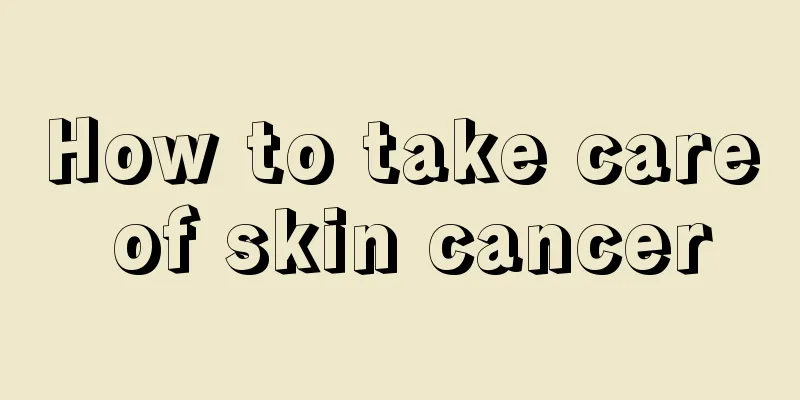What to do if you have an allergic reaction to a bee sting

|
Bees are a common insect that everyone has seen, and many people have been stung by bees. Everyone reacts differently to bee stings. For some people, the swelling will go away after a while, while for others it will last for several days. Some people who are sensitive to bee venom will even experience allergies. After an allergy, many people will worry and don’t know what to do. So, what should you do if you have an allergy after being stung by a bee? When stung by a bee, the local skin will feel pain and itching, accompanied by allergic irritation and local inflammatory reactions such as redness, swelling and heat. If a bee stinger gets into your skin, be sure to remove it. Use a sterilized needle to make a small hole in the targeted area, squeeze out the poisonous water, and then apply complex iodine. Observe closely for about half an hour. If you find that the patient has difficulty breathing, or his breathing becomes rough or there is a wheezing sound, immediately send to the nearest hospital for emergency treatment. If you are stung by a bee, since bee venom is acidic, you can use soapy water or 3% ammonia water, 5% sodium bicarbonate solution, salt water, etc. to wash the wound. If you are stung by a wasp, wash and apply vinegar. You can also wash fresh purslane and squeeze the juice to apply to the wound. If you have Nantong snake medicine (Jide Du snake medicine), you can dissolve the tablets in warm water and apply it around the wound; or you can grind Zijinzhan or Liushen Pills into powder and apply it to the affected area, which has the effects of detoxification, pain relief and swelling reduction. The folk single test prescription can be used: ① Mash garlic or ginger or apply juice to the affected area. ②Cut the fresh eggplant and apply it to the affected area; or add appropriate amount of sugar, mash it and apply it. ③ Mash fresh violet yedoensis, lobelia, dandelion, wild chrysanthemum, leek, etc. together or individually and apply to the affected area. If an allergic reaction occurs, for mild cases, you can take 1 tablet of Astemizole once a day; or 4 mg of Promethazine, 3 times a day. Those with severe symptoms should be sent to hospital for treatment as soon as possible. Precautions: After being stung by a venomous bee, applying ammonia to the affected area is basically ineffective, because the histamine in the bee venom cannot be neutralized by ammonia. Wasps are poisonous, but bees are not. After being stung by a bee, you should also remove the stinger first. The difference in treatment from wasps is that you can apply some ammonia, baking soda or soapy water to the wound. Those who are asymptomatic twenty minutes after being stung by a bee can rest assured. Cleaning: Once stung by a bee, clean the wound with warm water, soapy water, salt water or sugar water. If there is no water, fresh urine will also work. If there is any stinger left in the wound, it should be removed immediately. Apply medicine: Wanhua oil, safflower oil, green ointment, etc. You can also mash and chew ginger, garlic, purslane (a wild vegetable) and apply it to the wound. Seek medical treatment: If you experience symptoms such as headache, dizziness, nausea, vomiting, irritability, fever, etc., you should go to the hospital for treatment immediately. Allergic reaction to bee stings Each person's sensitivity to bee venom varies greatly. Some individuals are allergic to bee venom, which manifests as strong local redness and swelling at the bee sting, or severe and fatal reactions. Therefore, when bee venom is used clinically, desensitization treatment is used for allergic patients, just like penicillin. The method is to take 1 tablet each of chlorpheniramine (4 mg) and prednisone (5 mg). If there is no improvement after 4 hours, continue to take it according to the above method until the symptoms disappear. If there is no effect after 3 to 4 times, you should go to the hospital for further examination and treatment. Therefore, if there is a stinger left in the skin after being stung by a bee, it is necessary to pick it out in time. People who have allergies should act according to their own situation. If it is not too serious, they can apply ointment and wait for recovery. If it is more serious, they need to take some medicine for treatment. Some people also need to go to the hospital for timely medical treatment to prevent the situation from getting worse. |
<<: What to do if you are stung by a bee
>>: What to do if a bee stung your neck
Recommend
What is the reason why the rice and wine nests die
Many people like to go fishing in winter, and at ...
Organic cosmetics
Cosmetics are very common and there are many type...
What are the side effects of oxaliplatin?
Injection of oxaliplatin may cause anemia, leukop...
What are the benefits of independent thinking
As humans, we are advanced animals with the abili...
A sentimental person
Many people usually describe a person's chara...
Melanoma can be seen in the early stages from the pigmentation of the rash
Melanoma can be seen in its early stages from the...
Four levels of mental retardation
When it comes to children, most parents certainly...
Cure rate of targeted drugs for breast cancer
What is the cure rate of targeted drugs for breas...
Will my face swell if I have tooth inflammation?
The impact of tooth inflammation is very large. M...
Differential diagnosis of ovarian tumors
Ovarian tumor is a common tumor occurring in fema...
Gallbladder cancer causes severe pain as the main symptom
Gallbladder cancer is a common cancer in the gall...
What are the methods to protect gastric mucosa
The stomach is a very important digestive organ i...
The difference between cupping and scraping
Cupping and scraping are two very good ways to he...
Who are the most susceptible groups to bladder cancer? What are the common causes of bladder cancer?
People who are prone to bladder cancer mainly inc...
What are the symptoms of mental disorders?
In modern life, people’s work pace is very fast, ...









